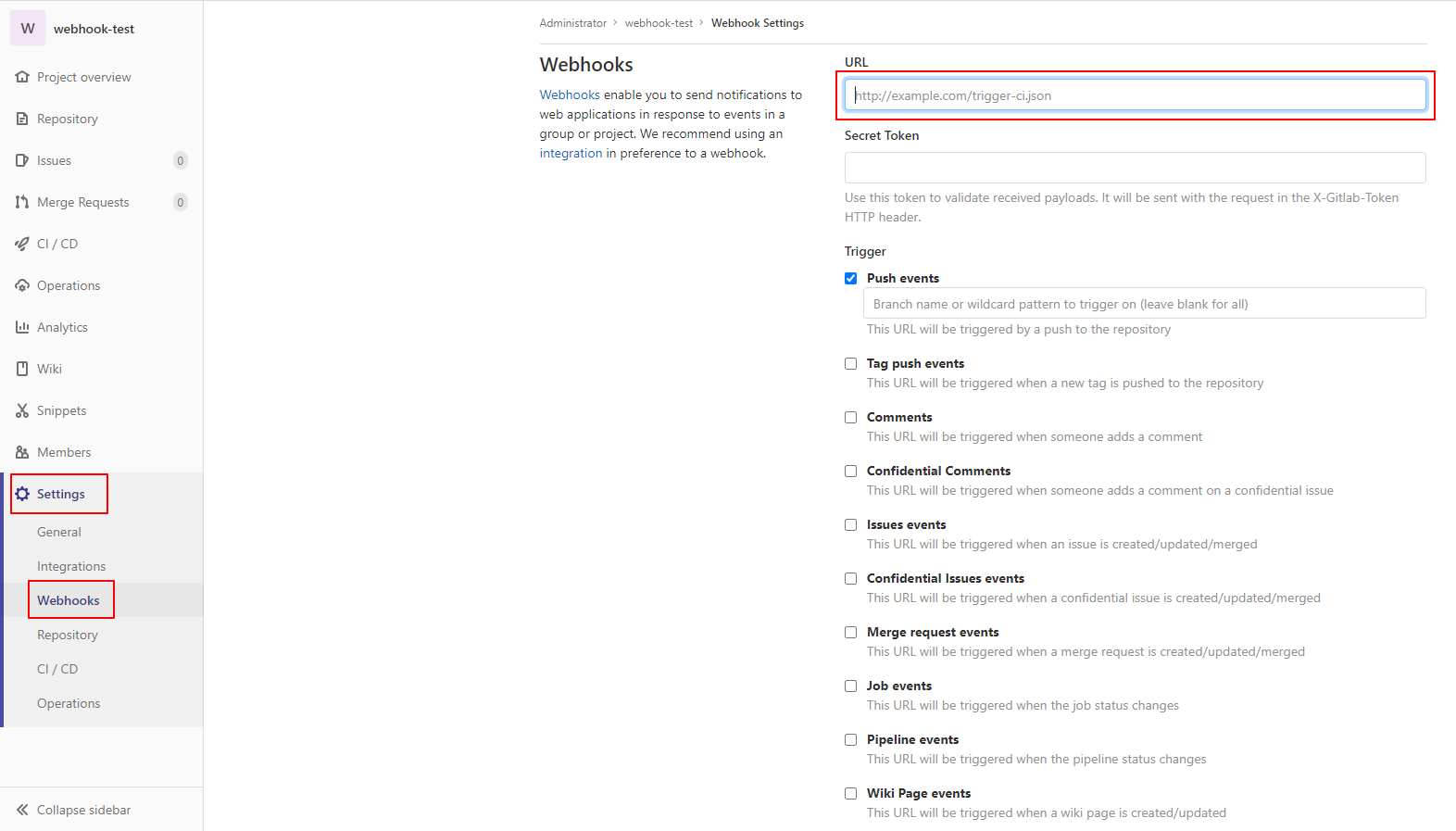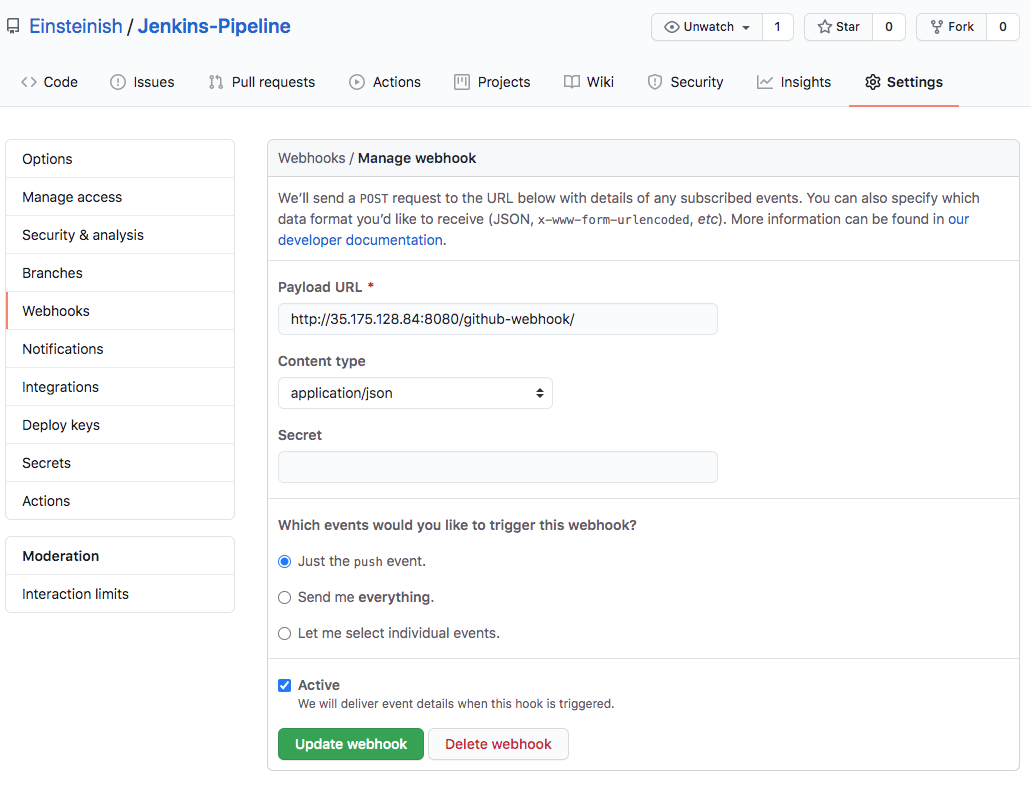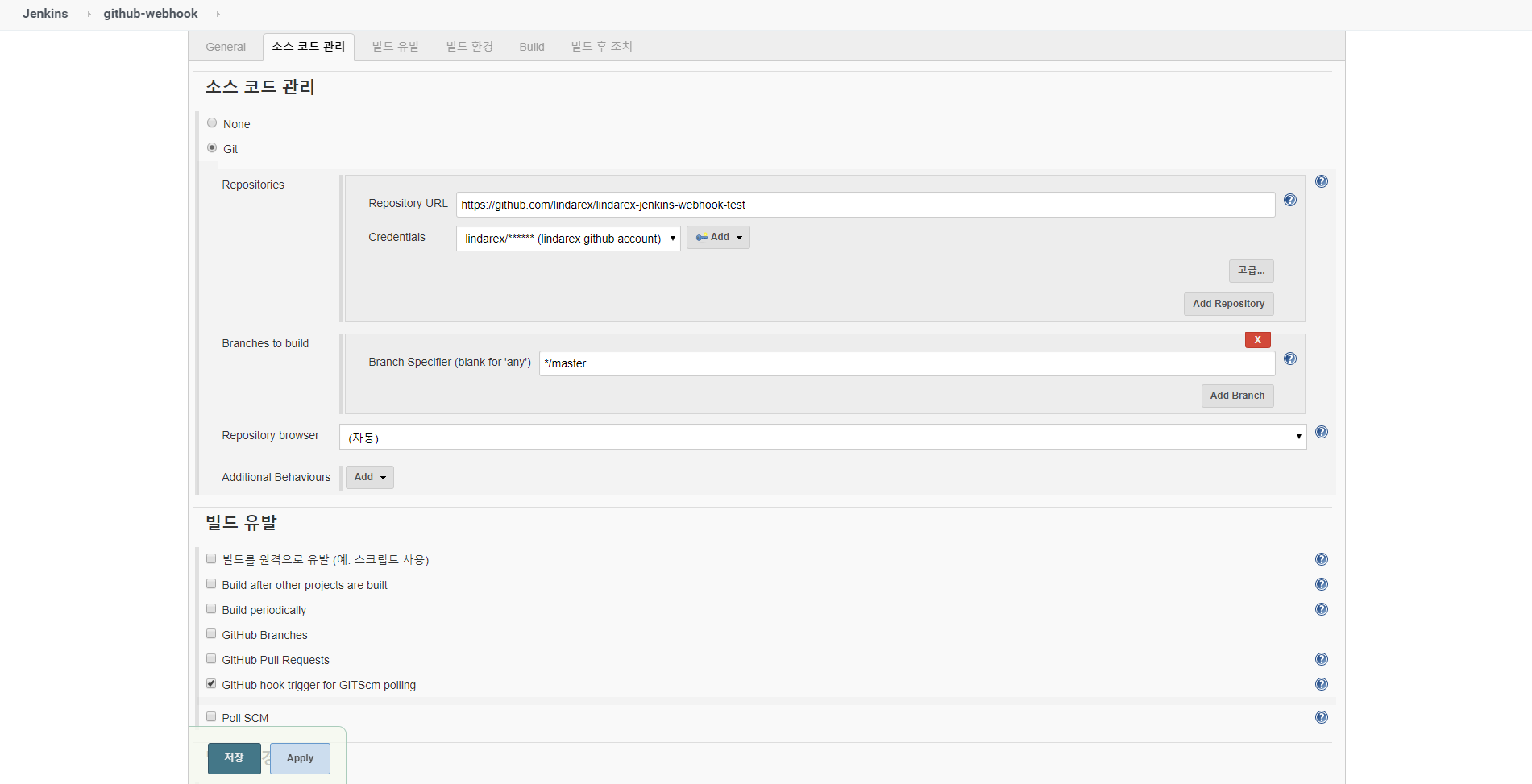
You should see the changes you made to the listener.py file. It will also work behind a corporate firewall. Press the Add webhook button and youre done.
#Jenkins git webook code
And on the same page, select Let me select individual events. Packages Security Code review Issues Integrations GitHub Sponsors Customer stories Team Enterprise Explore Explore GitHub Learn and contribute Topics Collections Trending Skills GitHub Sponsors Open source guides Connect with others The ReadME Project Events Community forum GitHub Education GitHub. Paste the GitHub Webhook URL from Bitrise to the Payload URL. Navigate to your GitHub repository and select Settings. This setup will work without configuring router, firewall or having a public IP. Copy the webhook URL for the selected service. Jenkins pipeline configuration is stored in Git. Subsequent builds will be triggered on any new commits and GitHub pull request status will show whether build succeeded or failed. Webhook Relay operator will ensure that GitHub webhooks on push events trigger new Jenkins builds for a. Run honcho start again and push another file to your repository with the webhook. In this short guide we will configure Jenkins to start builds on GitHub pull requests.
#Jenkins git webook update
You can update the payload parameters it uses or what the function does with the data. Modify the tracking() function to update how the Webhook Listener uses the POST data. Print 'Webhook received! %s committed %s' % (commit_author, commit_hash) Notifier.notify('%s committed %s\nClick to view in Bitbucket' % (commit_author, commit_hash), title='Webhook received!', open=commit_url) Start by creating a new file with the following methods=)Ĭommit_author = dataĬommit_hash = dataĬommit_url = data The next thing we want to do is push something to the repository to see if we can trigger the webhook. Open the URL to ngrok's web interface: You see the GET request that your browser makes to your server.

Works with GitHub, GitLab, Bitbucket, Jira and many more. GitHub - jenkinsci/generic-webhook-trigger-plugin: Can receive any HTTP request, extract any values from JSON or XML and trigger a job with those values available as variables. Now that you created a webhook, open your webhook's URL. Works with GitHub, GitLab, Bitbucket, Jira and many more. For the purposes of this tutorial, keep the Triggers as only a Repository Push. From your repository in Bitbucket, select Repository settings on the left sidebar, then select Webhooks.Ĭlick the Add webhook button to create a webhook for the repository.Įnter the URL to the server in the URL field, similar to In the Account dropdown, select your GitHub account. Enter the artifact information: Enter a Display Name, or leave the autogenerated default. Now it's time to create a webhook for your own repository. To configure the artifact, go to the Artifact Constraints dropdown for the GitHub trigger configuration, and select Define a new artifact'.

You can solve this by making the one job parameterized. This has been reported in many issues 64 116 126 162 171.

If this plugin gets invoked by many webhooks at the same time it may trigger only one build and it will have many Generic Cause as causes.

Use the second URL to see the requests you send the first URL. Jenkins will batch builds of a job if those builds have same parameters. The first one is the webhook URL that you use to access the server. However in a more secure deployment, Jenkins will probably not be running on a publicly. You can see what it's expecting in the pipeline by going to your Jenkins instance script console (/script) and executing this: import įor (Item job : Jenkins.getInstance().getAllItems(Item.You can access this webhook publicly via at You can access ngrok's web interface via Take note of both these URL's. The webhook can also be a simple public URL pointing to the Jenkins deployment, that is reachable by github. I dug into the Jenkins code ( ) to figure out what wasn't matching up. I know this is an old thread but for the benefit of those who end up here:ġ) Your job has to have run at least once manually before the hook will workĢ) The repo pushing to Jenkins, the GitHub project url in the project configuration, and the repo(s) in your pipeline Job have to line up.ģ) You need a log recorder in Jenkins to see what's being sent by GitHub:


 0 kommentar(er)
0 kommentar(er)
